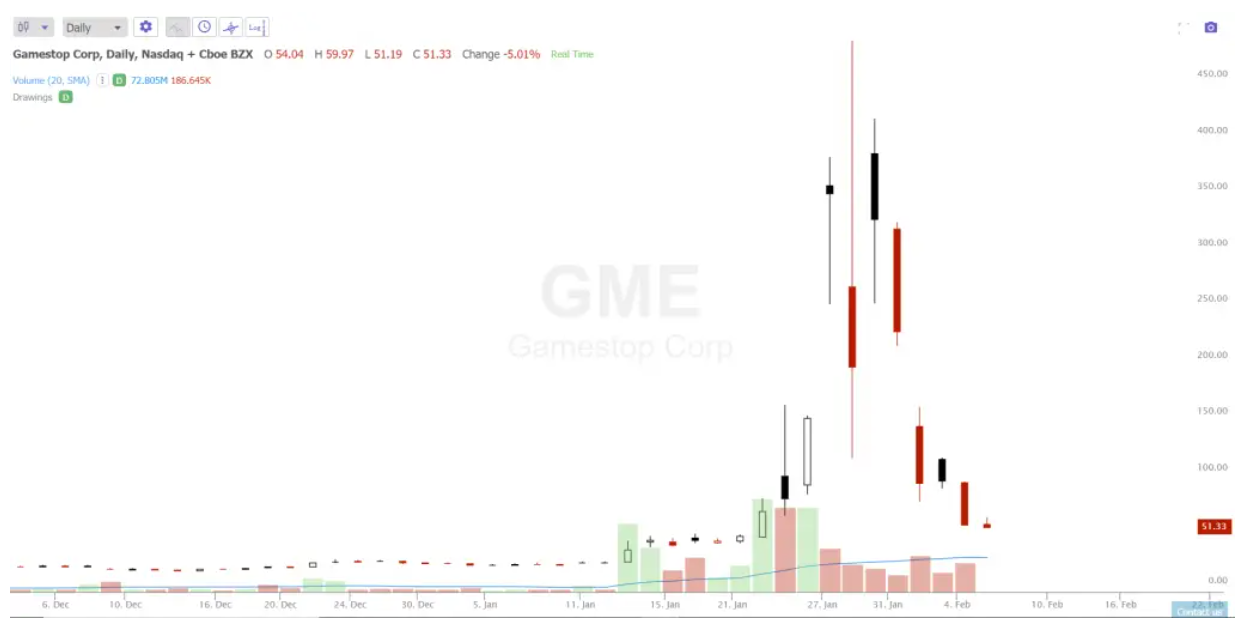A “squeeze” is price action that is so strong in one direction that it forces traders and investors to change their market positions based on moves going too far against them. The momentum that causes traders to exit or reverse their positions can start a feedback loop that feeds on itself making the move bigger as stop losses and trailing stops are triggered. New positions will also be entered in the direction of the move causing a pile on effect.
A gamma squeeze can force additional buying activity on a stock because of open option positions on the underlying stock. A gamma squeeze is one of the causes of the recent Gamestop chart price action in 2021.
When an option traders sells to open an options contract, they are likely not writing a contract on an existing stock share but instead creating a derivative with a market maker. Usually the option trader and market maker are creating an options contract where both the underlying stock and the risk of liability only exist with the counter party within the options market. These positions can cause the movement of stocks due to hedging and option exercise.
The options are written based on the Black-Scholes pricing model using the Greeks to calculate the risks involved. Gamma is one of the Greeks used by options market makers to calculate the price needed to make the bet worth making with room for profits. Gamma is the rate of an option’s delta change for every point move in the delta. Gamma is at its peak when an option contract is at-the-money, the further away an option contract strike price gets from the price of the underlying stock the lower the gamma becomes. Gamma measures the speed and magnitude of delta expansion or contraction.
As the gamma becomes higher in an open option trade, the more underlying stock the market maker must buy or sell to create a hedge against their open options risk on the contracts they sold. As the gamma expands the market makers must buy or sell positions in the underlying stock to maintain their hedges and cap the risk they are exposed to. When huge volume of forced buying or selling happens in a stock and price volatility expands it can create a gamma squeeze on the price chart of the stock and in the options chain.
The bear trap was set on the Gamestop chart as the short interest became higher than the outstanding shares as too many traders were betting on zero. As the majority of traders believed the company would go bankrupt the bearish sentiment became extreme. Many of the short sellers bought out-of-the-money call options on GME stock to hedge their risks if the stock rallied. On the first rally in the GME chart even more bearish short sellers thought that shorting at higher prices was even a better bet and piled in and many needed additional GME call options to hedge their new short positions. At this time momentum traders, trend traders, and breakout traders starting buying stock and call options to drive the price even higher.
The buying of call option hedges for new short positions along with new call option buyers caused the market makers to need to buy more GME stock to hedge all these call options they wrote. Gamma squeezes can move fast in both directions and can go down as fast as they go up as hedges need to be added early on they can also be sold off quickly as the call options are bought back, sold to close, or expire.
As gamma squeezes end the price can move back down as fast as it moved up. Volatility becomes extreme during and after a gamma squeeze, causing it to be very difficult to price options based on the predictability of the magnitude of a directional move. This inability to measure risk of gamma exposure makes options much more expensive to get compensated for this risk. Once the volatility subsides the extrinsic option vega pricing is removed from the option pricing. As gamma contracted for Gamestop stock the option pricing also dropped sharply, and the price collapsed allowing for the removal of the option and stock hedges causing a further drop in the stock price.
What Is a gamma squeeze? Option and stock traders having to make fast decisions to mange the risk of their positions in a fast moving market when the primary driver is gamma hedging of existing option positions.
